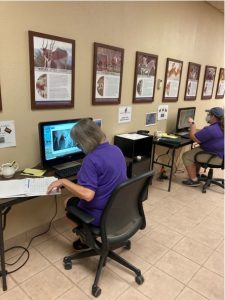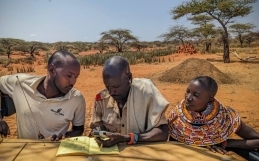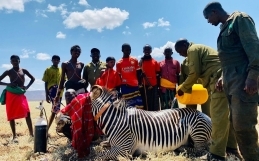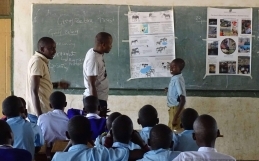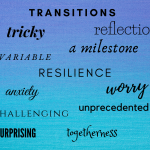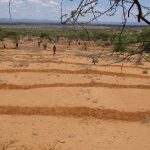By: Mary Thomas and Emily Thomas, The Living Desert Zoo and Gardens, Palm Desert, CA, USA
Incorporated into Grevy’s Zebra Trust’s (GZT) holistic approach to Grevy’s Zebra conservation is a non-invasive method of wildlife monitoring referred to as camera trapping. This system utilizes game cameras to observe wildlife, primarily zebras in this case, in their immediate environment. GZT has as many as 33 different camera trap locations across more than 10,0002 kilometers where they monitor zebras and surrounding wildlife including elephants, baboons, and hyenas. Camera traps have various settings, including motion detection, video, and time-lapse, and capture images 24 hours a day. These images, sometimes thousands per batch, need to be organized and analyzed to produce valuable information. That’s where community science comes to the rescue! A group of 28 dedicated volunteers from The Living Desert Zoo and Gardens in Palm Desert, California has spent countless hours analyzing photo data from several conservation organizations, including GZT.
Setting up and maintaining camera traps in the field is resource- intensive for organizations, without even considering the time it takes to analyze the data. Volunteers at The Living Desert have played a crucial role in analyzing nearly 15 weeks of data from photos recently captured in the field. Analyzing the photos often requires volunteers to learn new technological and investigative skills to identify, distinguish between, and count animals they may have never seen in the wild. Despite the obstacles, these enthusiastic volunteers are passionate about the contributions they make to international conservation and take pride in their efforts.
“Being a volunteer at the zoo, I always hear about the work The Living Desert is doing to support other organization’s research. Being a part of helping go through this camera data, I feel like I’m helping contribute to a much larger cause, and I’m invested in the outcome of the entire project.” -Tom Mortimer
“It can be hard to stop. I always want to see what the next picture will have in it.” -Cassandra Strizak
GZT and The Living Desert also take pride in empowering citizens to contribute to conservation efforts. This is particularly important at present, given the stresses that field conservation organizations like GZT face. Whenever other organizations such as The Living Desert can pitch in to help do some of the work, it lightens the workload for the field organizations. Zoo volunteers are invaluable in analyzing camera trap data and, by extension, helping further international wildlife conservation efforts!

